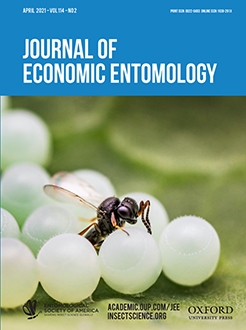The diamondback moth, Plutella xylostella (L.) (Lepidoptera: Plutellidae), is a key pest of Brassicaceae worldwide. Populations have globally evolved resistance to various insecticides including chlorfenapyr, which was observed at high frequency in Brazil. We report the genetic characterization and fitness costs associated with chlorfenapyr resistance in a field-derived strain. The resistant strain (BZR-RR) and a susceptible strain (REC-SS) were used in both concentration–response bioassays and demography-based approach. Inheritance pattern of chlorfenapyr resistance was determined by conducting reciprocal crosses between susceptible and resistant strains, and by backcrossing. Next, life table analysis for the susceptible, heterozygotes, and resistant strains was performed to assess eventual fitness costs associated with chlorfenapyr resistance. Resistance of P. xylostella (BZR-RR) strain to chlorfenapyr was very high (RR50 = 421.58-fold) and also autosomal (no differences between reciprocal crosses), monofactorial and incompletely dominant (F1 pool DD = 0.26 ± 0.14). Dominance (h) was concentration dependent with 16 mg/l allowing at least 95% survival of the resistant heterozygotes. Recessive fitness cost was observed to be associated with resistance to chlorfenapyr. The relative fitness of heterozygotes (RS) and resistant homozygotes (BZR-RR) in comparison to the susceptible strain (REC-SS) was 0.91 and 0.23, respectively. Significant differences were found for many fitness components in the resistant homozygotes. Altogether, results suggest a rational use of chlorfenapyr in areas where susceptible populations still prevail, in parallel with the use of diagnostic concentrations (e. g., 20 mg chlorfenapyr/l), and rotation with different mode of actions, for which fitness costs of resistance are nonrecessive in P. xylostella.
How to translate text using browser tools
22 January 2021
Inheritance and Fitness of Plutella xylostella (Lepidoptera: Plutellidae) Resistance to Chlorfenapyr
Jaconias Escócio Lima Neto,
Lílian Maria da Solidade Ribeiro,
Herbert Álvaro Abreu de Siqueira
ACCESS THE FULL ARTICLE
It is not available for individual sale.
This article is only available to subscribers.
It is not available for individual sale.
It is not available for individual sale.

Journal of Economic Entomology
Vol. 114 • No. 2
April 2021
Vol. 114 • No. 2
April 2021
evolution of resistance
fitness
Lepidoptera
pyrrole
resistance genetics




